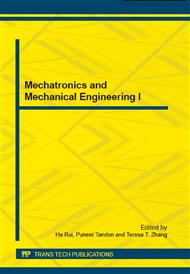p.199
p.204
p.210
p.215
p.221
p.226
p.231
p.236
p.243
The Effect of Percentage of CO2 on the Biogas Counterflow Diffusion Flame Stability
Abstract:
This study aims to determine the effect of the percentage of CO2 in the biogas to the characteristics of biogas diffusion flame. Counterflow configuration was used in this study to investigate detail structure of diffusion flame and the flame stability of biogas. The concentration of CO2 in the biogas was varied from 0% to 50% while the mass flow rate of the reactants was varied from 4 to 14 L / min. The results showed that the CO2 in the biogas fuel affect the diffusion flame characteristics, especially the area of luminous yellow flame formed in the fuel flow. In the low oxygen concentration, percentage of CO2 did not affect the diffusion flame stability. However, the flame stability was more influenced by the rate of diffusion between fuel and oxygen. Therefore, the combustion of biogas is more recommended to be done in the low oxygen concentration.
Info:
Periodical:
Pages:
221-225
Citation:
Online since:
October 2014
Authors:
Price:
Сopyright:
© 2014 Trans Tech Publications Ltd. All Rights Reserved
Share:
Citation:


